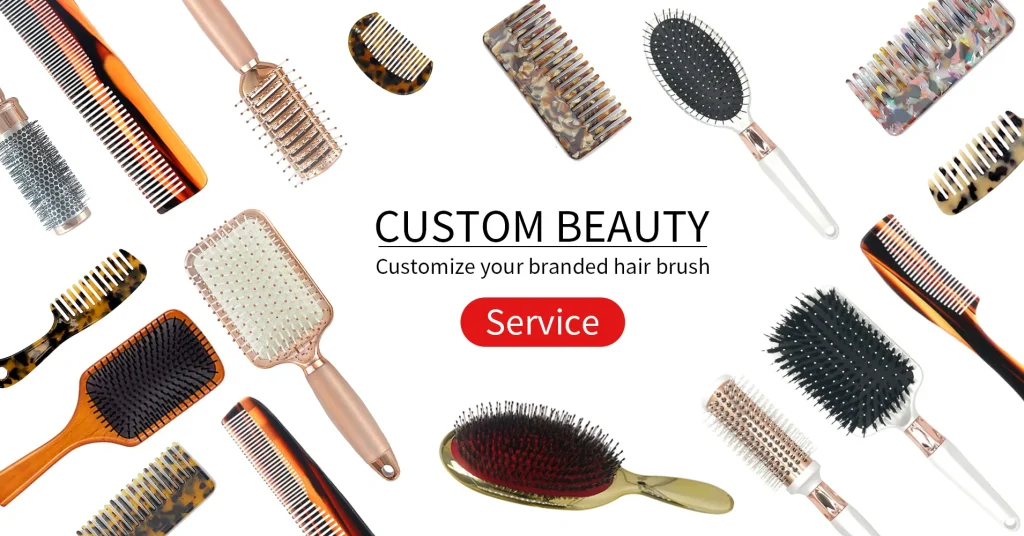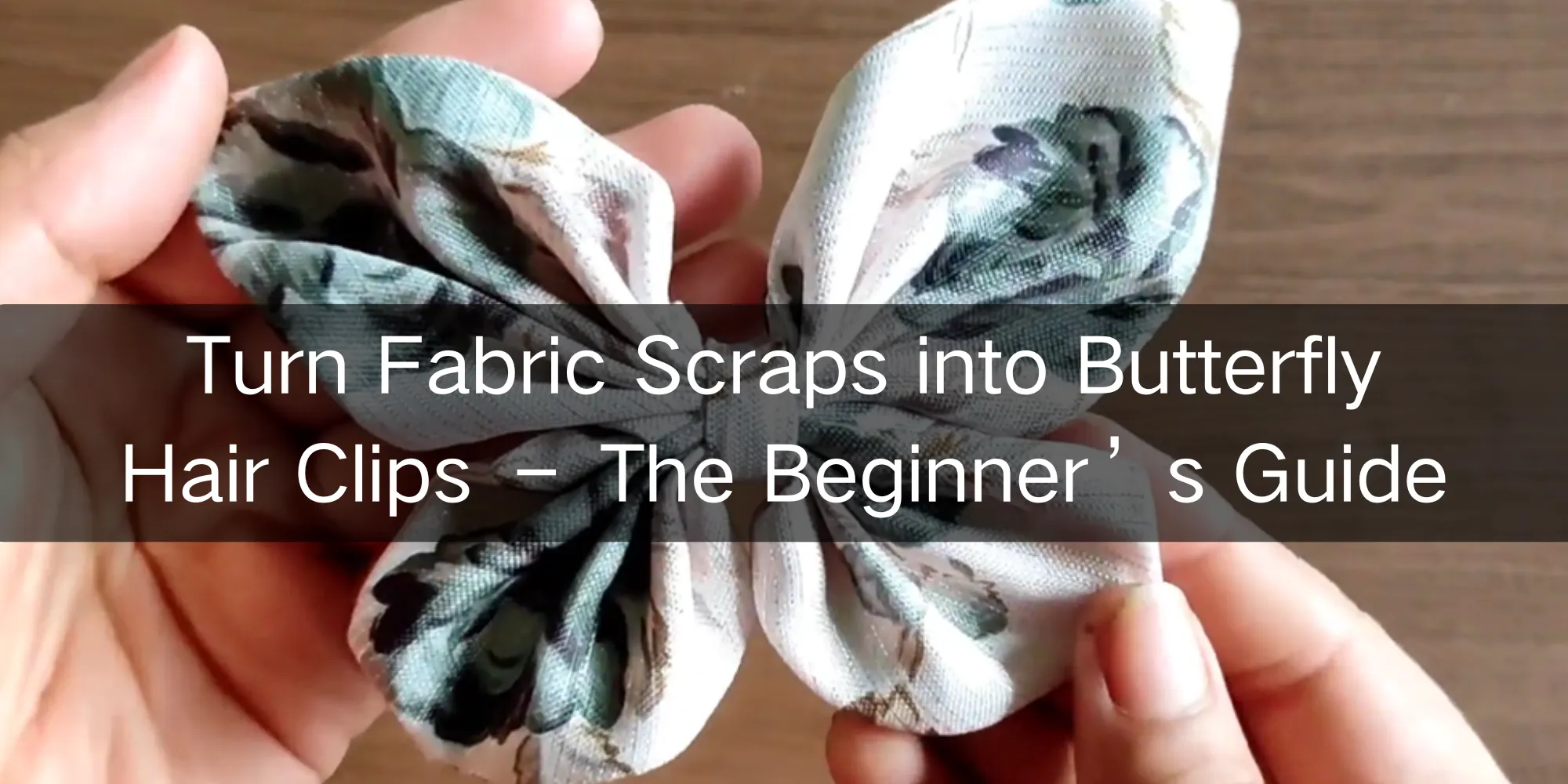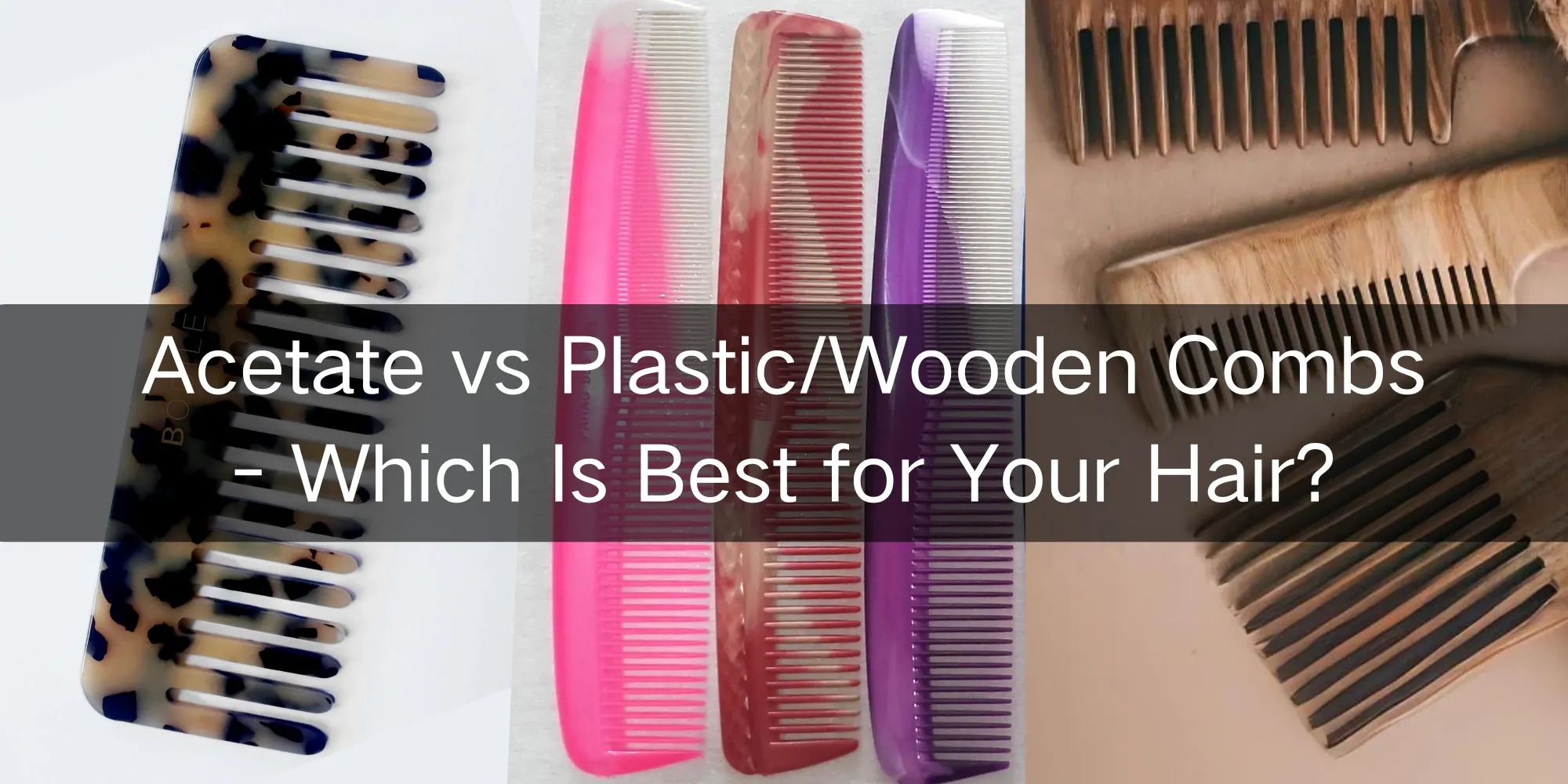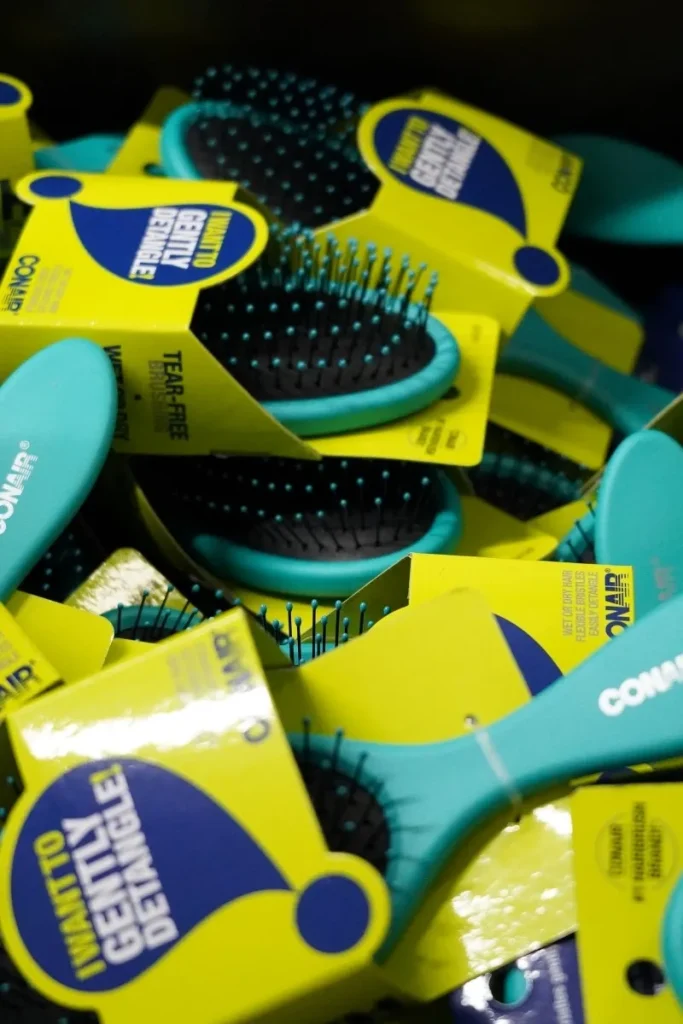In the modern market, a hair brush’s surface finish impacts its appearance, functionality, and durability. Beyond meeting daily usage needs, it must also align with consumer preferences for aesthetics and comfort. Surface treatments like glossy coatings, matte finishes, or electroplating not only improve the look of the brush but also enhance features like grip, scratch resistance, and heat resistance. For brands, customizing surface finishes is an effective way to stand out and strengthen market competitiveness.
Understanding Hair Brush Surface Finishes
What is Surface Finishing?
Surface finishing refers to applying coatings or effects to the brush’s surface to change its appearance, feel, and function. Common finishes include glossy, matte, and electroplating, each offering different visual and performance benefits.
The Role of Surface Finishes in Brush Production
Surface finishes enhance a brush’s appearance and durability while improving its grip and user experience. They offer various functional benefits, such as heat resistance and scratch protection. Custom surface finishes also allow brands to differentiate themselves in a competitive market. For consumers, the surface treatment affects both aesthetics and the product’s longevity.
Common Types of Surface Finishes
Plain Color
Plain Color refers to hair brushes or combs that are produced using the natural color of the raw materials or a simple coloring process without any further surface treatment (such as spraying, electroplating, or printing). This finish is typically used for simple designs that emphasize functionality and minimalism.
Characteristics
No surface treatments: The product’s surface is not subjected to additional treatments like spray painting, printing, or electroplating.
Material-based color: The color comes from the natural or base color of the materials used, such as plastic, resin, or wood.
Simple colors: Plain color finishes typically feature solid colors with clear, simple designs, without complex patterns or decorations.
Advantages
Minimalist Style: Ideal for customers who prefer a simple, functional design without the need for complex decorations.
Cost-effective: Since no additional surface treatments are required, the production costs are lower, making it suitable for mass production.
Eco-friendly: Uses natural material colors, avoiding the need for potentially harmful coatings, making it more environmentally friendly.
- Quick Production: Without complicated surface treatments, production is faster, which is ideal for urgent orders.
Suitable Applications
Basic products: Perfect for simple, functional brushes or combs that do not require decorative finishes.
Mass production: Since the process is simplified, it is suited for large-scale, rapid production.
Everyday use products: Well-suited for daily-use tools or functional products, such as combs, brushes, and household items.
Customization Options
Color choices: Despite the lack of complex surface treatments, a variety of basic color options, such as black, white, blue, and pink, can still be offered to meet different customer preferences.
Material options: As there are no specific surface treatment requirements, different materials like plastic, wood, or resin can be selected based on the desired product specifications.
Plain Color is a simple, efficient and cost-effective way of manufacturing basic products. In this way, manufacturers can offer simple, functional, and economical products that meet consumer demand for a simple look and efficient production.
Pro Tip:
Also use hair brush cleaning hacks such as using a toothbrush to scrub hard to reach spots. In this way you will clean your beard comb effectively so that it will remain functional and hygienic. It’s essential to have the skill of cleaning your combs and hair brushes as this ensures long lasting grooming tools and a healthy beard.
spray coating process
The spray coating process involves applying different types of coatings (such as rubber paint, metallic paint, pearlescent paint, matte paint, UV coating, and glossy coating) onto the surface of combs or brushes, forming a smooth and uniform layer. This process not only enhances the product’s appearance but also improves its durability and aesthetic appeal. Below is a brief introduction to these various coatings and their applications in custom comb and brush production:
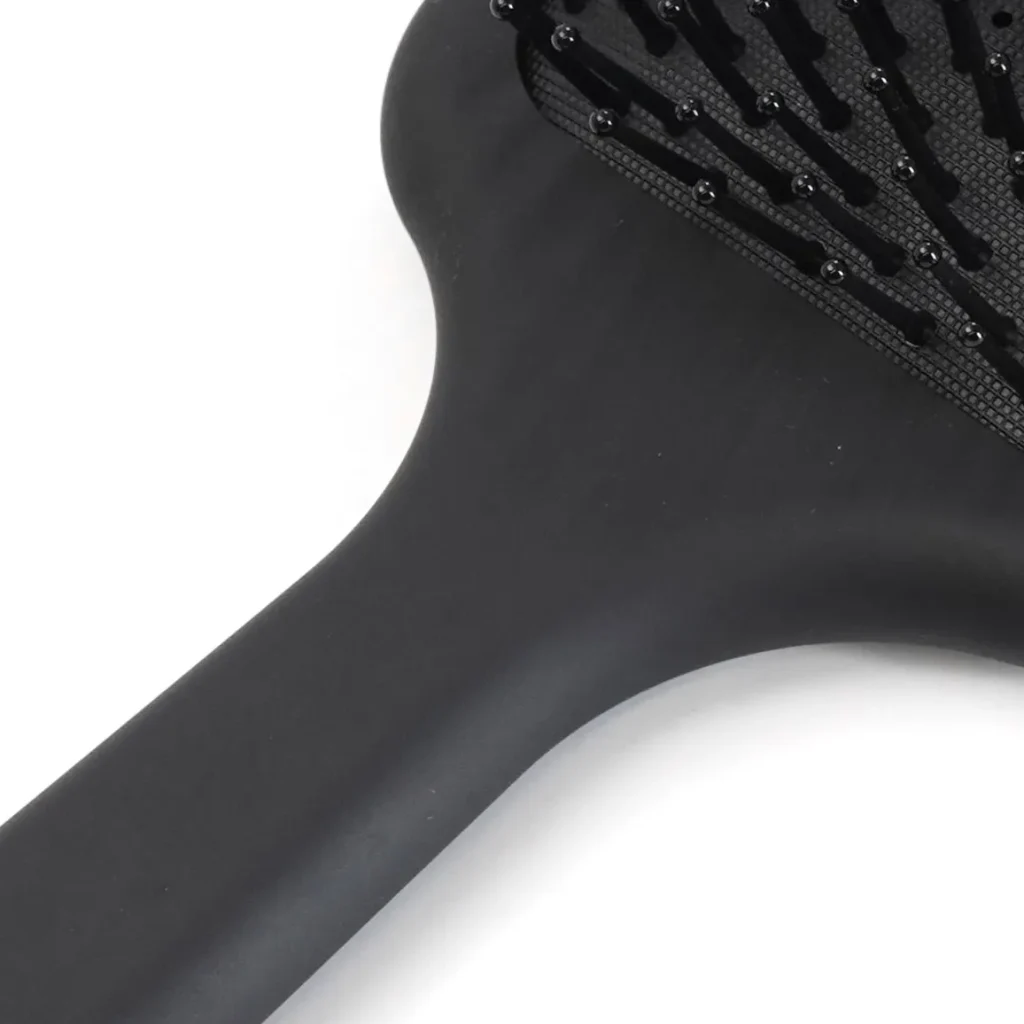
1. Rubber Paint
Rubber paint provides a non-slip surface for combs, offering an even stronger light-absorbing effect compared to matte paint. Its primary advantages include enhanced comfort and improved grip, making it especially suitable for everyday-use products.
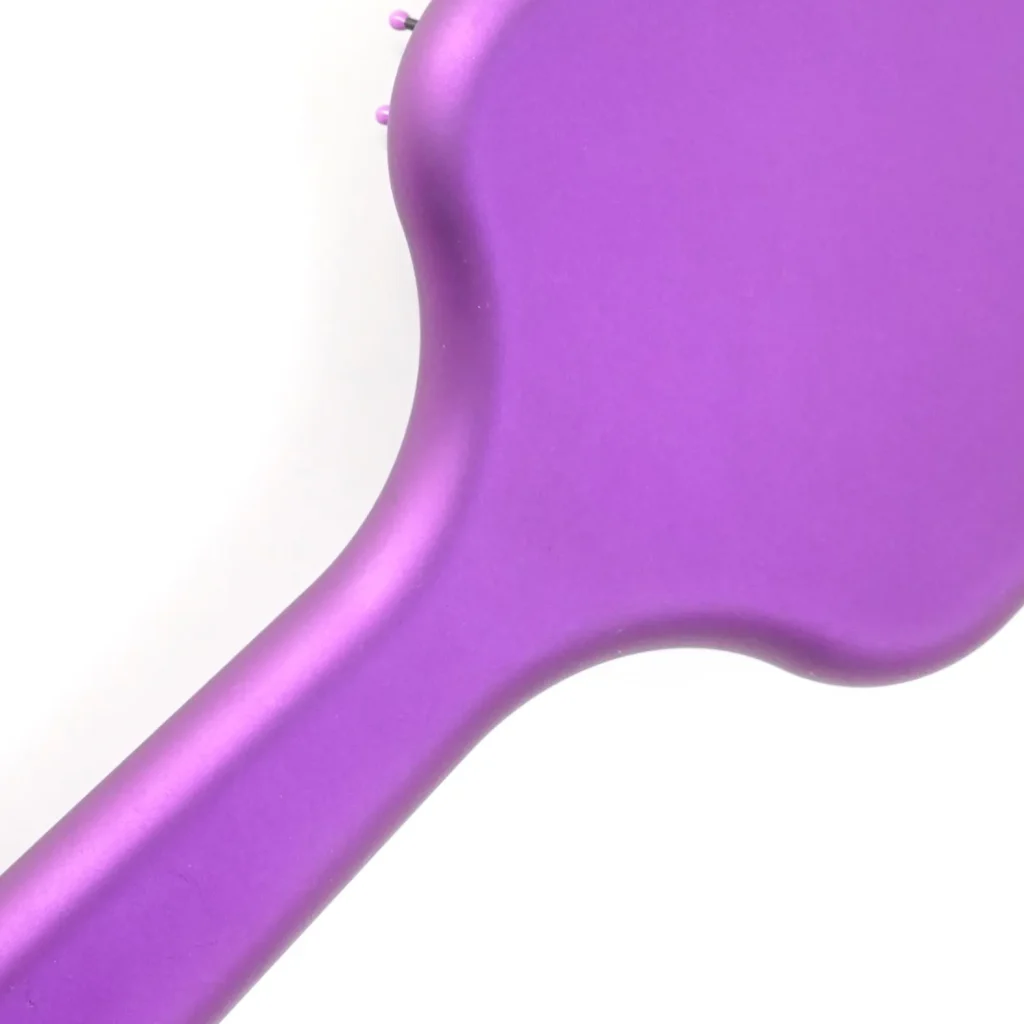
2. Metallic Paint
Metallic paint adds a shiny, metallic effect to the comb, giving it a modern and premium feel. This coating is typically used to enhance the brush’s appearance, increase visual appeal, and improve corrosion resistance.
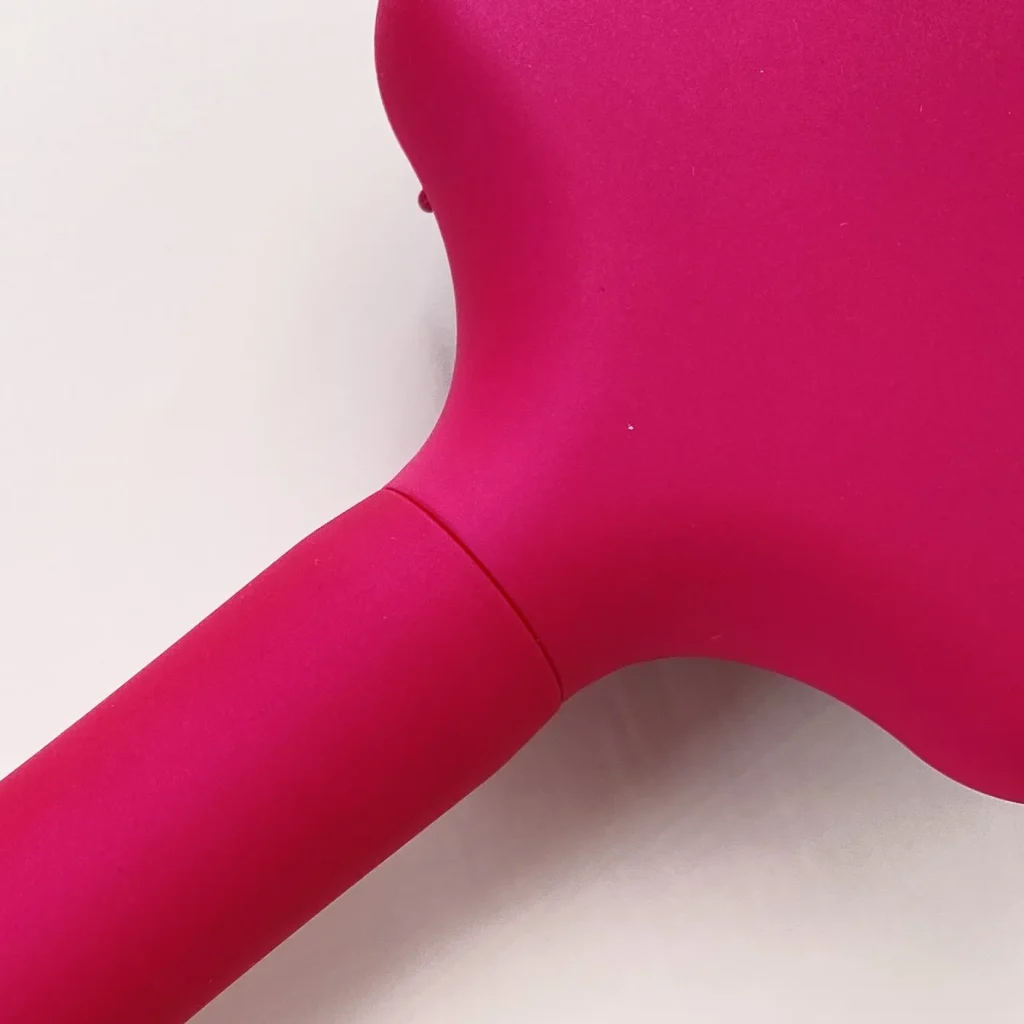
3. Pearlescent Paint
Pearlescent paint gives the comb a unique glossy effect, showing various colors as the light changes. This adds an artistic touch and uniqueness, perfect for high-end, personalized designs.
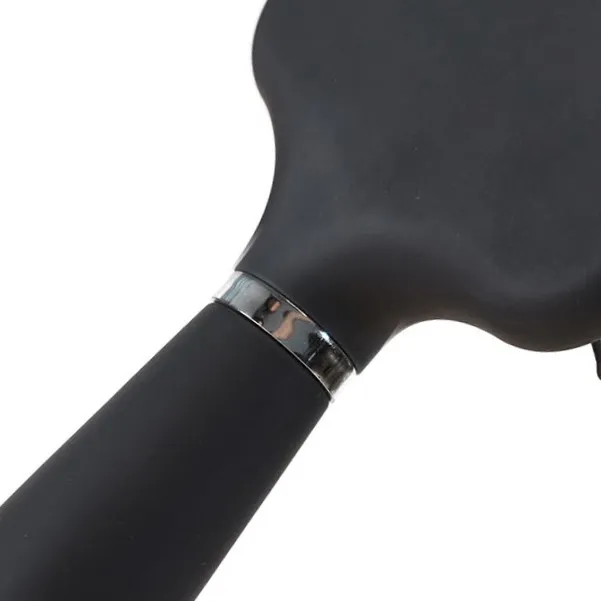
4. Matte Paint
Matte paint provides a subtle sheen and a luxurious tactile feel. It is highly durable and resistant to fingerprints, making it ideal for minimalist designs and the premium market.
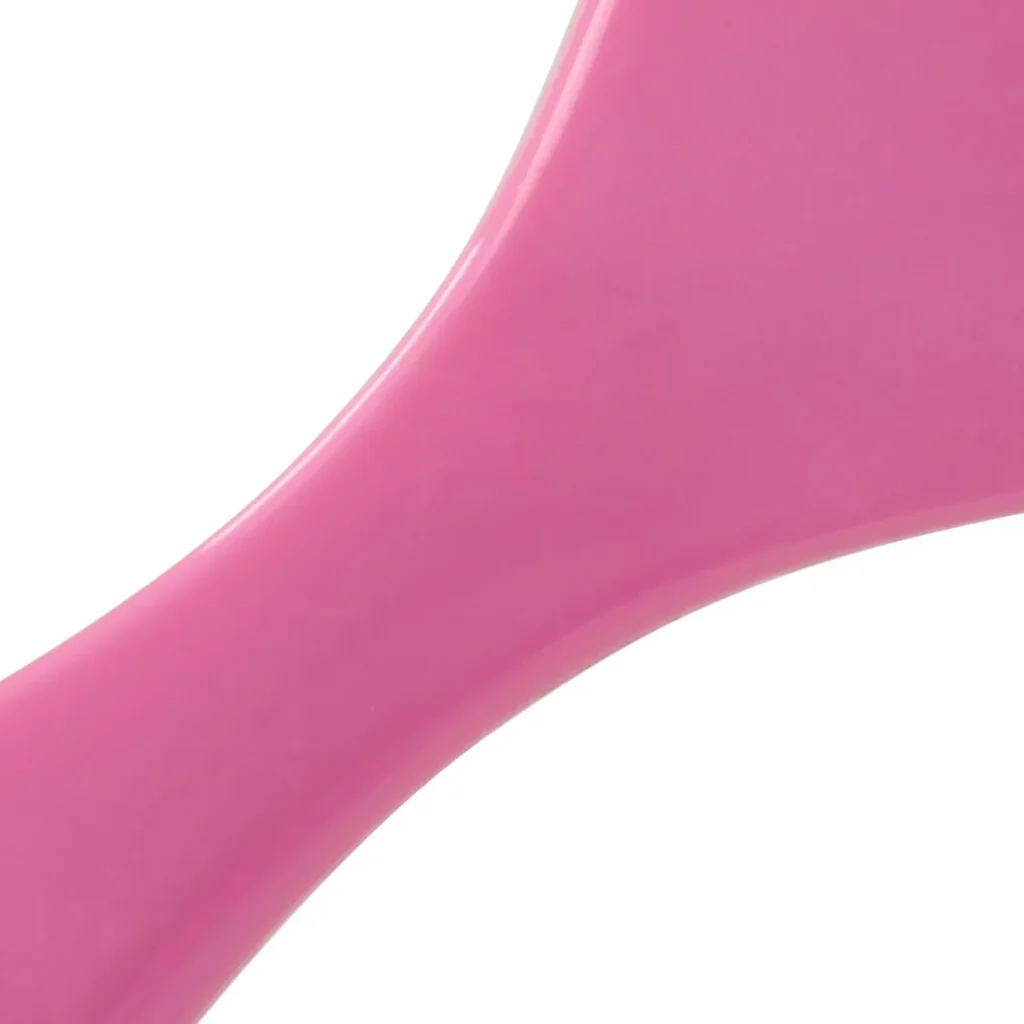
5. UV Coating
UV coating uses ultraviolet curing technology to provide a high-gloss finish, enhancing the surface’s wear resistance and durability. It also improves scratch resistance, making it suitable for products meant for long-term use.
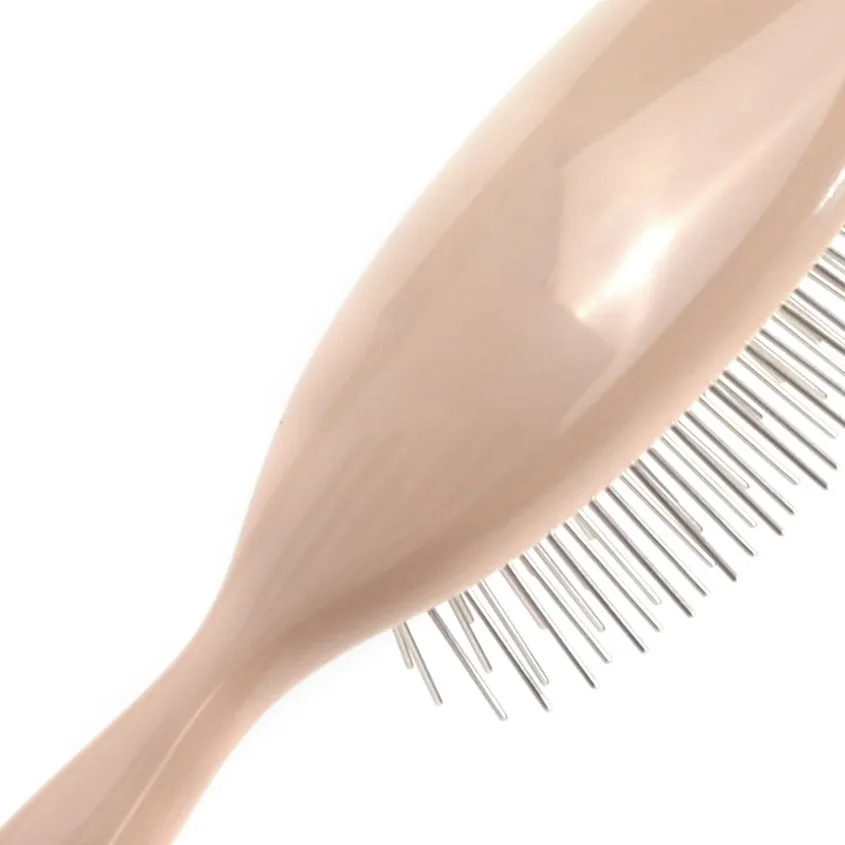
6. Glossy Coating
Glossy coating gives the comb a shiny, smooth finish, offering a sleek feel and eye-catching appearance. This is commonly used in the premium market, especially when emphasizing the product’s refined look.
Through the spray coating process, both the appearance and feel of the comb can be highly customized according to the customer’s preferences. Different coating effects (such as rubber paint, metallic paint, etc.) provide a wide range of design options, meeting various needs from comfort to fashion. Moreover, these processes are environmentally friendly, particularly in the energy-saving use of coatings.
Want to customize other effects? Contact us!
If you’re interested in other surface treatment effects or need further customization options, feel free to contact us. We’ll provide professional customization services tailored to your needs.
Electroplating
Electroplating involves using an electrochemical reaction to coat a comb’s surface with a layer of metal (such as chrome, gold, silver, etc.), often resulting in a mirror-like finish.
Provides enhanced corrosion resistance, wear resistance, and oxidation resistance, prolonging the product’s lifespan.
Advantages
Durability: The electroplated layer improves the comb’s wear resistance and corrosion protection, making it suitable for long-term use.
Aesthetic Appeal: The metallic sheen gives combs a premium and sophisticated look, ideal for high-end and luxury markets.
Anti-Oxidation: The metal coating prevents rust or damage in humid environments, making it suitable for bathrooms or areas with high moisture.
Design Versatility: A variety of metals (e.g., chrome, gold, rose gold) can be electroplated to meet diverse design requirements.
Common Electroplating Metals
Chrome Plating: Offers high gloss and excellent corrosion resistance; widely used for tools, combs, and decorative items.
Gold Plating: Creates a luxurious golden appearance, perfect for high-end markets.
Rose Gold Plating: Combines gold and copper elements, offering a warm pink metallic luster popular in modern designs.
Silver Plating: Provides an elegant and timeless appearance, suitable for traditional or contemporary designs.
Pearlescent Plating: Features a pearl-nickel layer that gives combs a soft, elegant, and unique sheen.
Applications
High-End Markets: Electroplated finishes are often used for products targeting quality-conscious and aesthetic-driven consumers.
Brand Customization: Enhances brand identity and value through bespoke designs.
Luxury or Limited-Edition Products: Ideal for creating unique and intricate combs or tools that appeal to detail-oriented customers.
Electroplating enhances the durability and visual appeal of combs, making it an excellent choice for custom and premium products. By selecting electroplating as a surface treatment, combs can stand out in the market, attracting consumers who prioritize aesthetics and durability.
Printing techniques
Printing techniques such as Water Transfer Printing and Thermal Transfer Printing are popular methods for decorating the surfaces of combs, brushes, and similar products. Each technique offers unique advantages and applications. Here’s a detailed overview of these two printing processes:
Water Transfer Printing
Water Transfer Printing is a technique that uses water as a medium to transfer patterns or designs onto the surface of objects. It is commonly applied to materials like plastic, metal, and ceramic, enabling complex patterns to be imprinted. This method is widely used in fashion products, electronic device cases, automotive parts, and haircare tools such as combs and brushes.
Features
High-Precision Pattern Transfer: Capable of replicating intricate designs, including gradients, textures, and fine details, even on curved or irregular surfaces.
Adaptability to Curved Surfaces: Particularly suitable for objects with complex shapes compared to traditional printing methods.
Eco-Friendly: Uses water as a medium, making it more environmentally friendly than conventional ink-based printing.
Advantages
Superior Visual Effects: Produces intricate and sophisticated patterns with high aesthetic appeal.
Full Surface Coverage: Enables complete coverage of an object’s surface, ideal for products requiring extensive decoration.
Versatility Across Materials: Works well on a variety of materials, including plastic, metal, glass, and wood.
Durability: Offers resistance to abrasion and UV rays, maintaining the design’s quality for an extended period.
Drawbacks
Limited Applicability: While versatile, certain very smooth or complex surfaces may pose challenges for water transfer printing.
Higher Production Costs: The process is more intricate than basic painting or screen printing, potentially leading to increased production costs.
Applications
High-End Markets: Ideal for premium products requiring distinctive, sophisticated patterns.
Personalized Customization: Perfect for products needing special designs or company logo integrations.
Electroplating enhances the durability and visual appeal of combs, making it an excellent choice for custom and premium products. By selecting electroplating as a surface treatment, combs can stand out in the market, attracting consumers who prioritize aesthetics and durability.
Thermal Transfer Printing
Thermal Transfer Printing is a technique that uses heat and pressure to transfer patterns from transfer paper onto the surface of objects. This method is widely applied to materials like plastic, fabric, and metal, making it suitable for mass production by efficiently transferring designs or text.
Features
High-Efficiency Production: Enables quick and accurate transfer of designs, making it ideal for large-scale manufacturing.
Long-Lasting Patterns: Transferred designs have strong adhesion, maintaining clarity over time and resisting fading or peeling.
Applicability to Flat and Slightly Curved Surfaces: Works well on flat and moderately curved surfaces, though it may face limitations on highly intricate or steeply curved objects.
Advantages
Vivid Colors: Capable of producing high-saturation colors with clear details.
Durability: Offers strong resistance to abrasion and water, ensuring designs withstand daily use and cleaning.
Material Versatility: Suitable for various materials, particularly effective on plastic and metal surfaces.
Drawbacks
Limited Applicability: Less effective on objects with extreme curves or complex shapes.
Special Equipment Required: Demands specialized thermal transfer equipment and transfer paper, requiring significant initial investment.
Applications
Mass Production: Its high production efficiency makes it perfect for bulk manufacturing, particularly for large orders.
Brand Customization: Ideal for products requiring bulk printing of company logos, brand labels, or specific designs, commonly used in fashion and tool industries.
Electroplating enhances the durability and visual appeal of combs, making it an excellent choice for custom and premium products. By selecting electroplating as a surface treatment, combs can stand out in the market, attracting consumers who prioritize aesthetics and durability.
Summary
Water Transfer Printing and Thermal Transfer Printing are two highly popular printing techniques that cater to different production needs and market demands. Water Transfer Printing excels in delivering intricate patterns and complex designs, making it ideal for high-end and personalized products. Meanwhile, Thermal Transfer Printing stands out for its efficiency, vibrant colors, and durability, making it the preferred choice for mass production and standardized customization. Brands can select the most suitable printing technique based on their target market, production scale, and budget.
Benefits of Customizing Surface Finishes
Customizing surface finishes for hairbrushes offers advantages beyond enhancing appearance. Tailoring surface treatments to specific needs allows brands to achieve unique market positioning, improve user experience, extend product longevity, and elevate aesthetic appeal. Here are the primary benefits of customizing surface finishes:
Brand Differentiation
Custom surface finishes help your hairbrushes stand out in the market. Different coatings, colors, textures, and patterns create a unique visual identity, strengthening brand recognition. Customization not only attracts consumers visually but also conveys brand personality and values through distinctive designs. Whether it’s the elegance of metallic gloss or the sleekness of a matte finish, these treatments resonate with the aesthetics and needs of target consumers, enhancing your brand’s market competitiveness.
Enhanced Durability and Performance
Selecting the right surface treatment significantly improves the durability and performance of hairbrushes. For example, UV coatings and electroplating enhance scratch resistance, protecting the product from wear and tear during daily use. Ceramic coatings boost heat resistance, making them suitable for users who frequently use hair dryers or styling tools. Durable finishes also extend the product’s lifespan, reducing the need for frequent replacements and adding overall value for consumers.
Improved User Experience
Surface treatments influence not just the appearance but also the usability of hairbrushes. Smooth glossy coatings provide a comfortable touch, while rubberized finishes enhance anti-slip properties, preventing accidental drops during use. Matte finishes offer a better grip, ideal for humid environments or prolonged use. Customizing surface treatments based on consumer needs significantly improves their experience, making every brush stroke more enjoyable and convenient.
Aesthetic Appeal
Custom surface finishes enhance the visual appeal of hairbrushes, meeting consumer demands for stylish and personalized designs. Surface treatments can add colors, textures, or gloss, aligning with consumers’ fashion preferences and lifestyles. For instance, pearlescent coatings give brushes a unique sheen, while electroplating creates a high-end, luxurious look. Customized aesthetics not only increase product appeal but also foster brand loyalty and customer satisfaction.
By customizing surface finishes, brands can create personalized products that meet consumer demands while maintaining quality and functionality. This approach not only strengthens brand image but also boosts market competitiveness.
Questions to Consider When Customizing Surface Finishes
When choosing custom surface finishes for hairbrushes, brands and manufacturers must evaluate multiple factors to ensure the selected finish meets target market needs while being feasible and cost-effective. Here are key questions to consider during the customization process:
Target Audience Preferences
Understanding your target audience’s preferences is the first step in customizing surface finishes. Different consumer groups have varying expectations regarding the look, feel, and functionality of hairbrushes. For example:
- Younger users may prefer trendy, vibrant patterns and colors.
- Professional stylists prioritize durability and comfort.
By identifying the specific needs of your audience, you can select finishes that align with their preferences, enhancing your product’s appeal and market competitiveness.
Material Compatibility
The compatibility of surface finishes with the base material is crucial. Different materials respond differently to treatments:
- Plastics may work well with glossy or UV coatings.
- Wood and metal might be better suited for matte or electroplated finishes.
When selecting a surface treatment, consider the hairbrush’s material to ensure the chosen finish maintains or enhances overall product quality.
Proper compatibility guarantees durability and aesthetic consistency across the finished product.
Production Feasibility and Cost
Production feasibility and cost are critical considerations in customizing finishes. Some treatments, like electroplating or thermal transfer printing, require specialized equipment and expertise, potentially increasing production costs or lead times. To strike a balance between quality and affordability:
- Evaluate the production complexity of various surface finishes.
- Choose a cost-effective option that aligns with your product goals without sacrificing quality.
An efficient approach helps maintain a competitive edge while staying within budget constraints.
Branding and Marketing Strategy
Surface finishes play a vital role in branding and marketing. They contribute to your product’s unique identity and reinforce brand perception. For example:
- High-end brands may opt for metallic or electroplated finishes to exude luxury.
- Eco-conscious brands might choose natural or textured finishes to reflect sustainability values.
By selecting finishes that align with your brand’s image, you can create a cohesive marketing message, enhance brand recognition, and connect more effectively with your target audience. Customized finishes can also become a compelling part of your brand’s story, fostering customer loyalty.
By addressing these critical considerations, you can ensure that customized surface finishes meet functional needs while enhancing aesthetic value and market appeal. Thoughtful choices in surface customization can set your product apart, aligning with brand goals and consumer expectations.
Conclusion
Surface finishes play a crucial role in customizing hairbrushes, enhancing their appearance, functionality, durability, and user experience. Whether it’s glossy, matte, electroplated, or ceramic coatings, each type offers distinct benefits. Custom surface treatments help brands stand out in a competitive market by meeting consumers’ needs for style, comfort, and longevity.
As demand for personalized, high-quality products grows, custom surface finishes have become essential for differentiating products and improving market appeal. When choosing the right surface treatment, consider the target audience, material compatibility, production feasibility, and budget. If you need expert advice or have custom requirements, contact us for tailored solutions to create unique, high-quality products.

